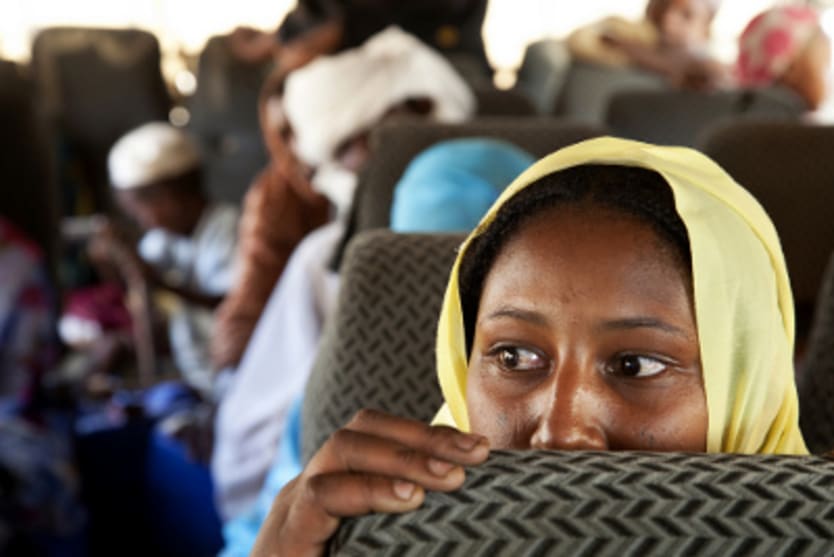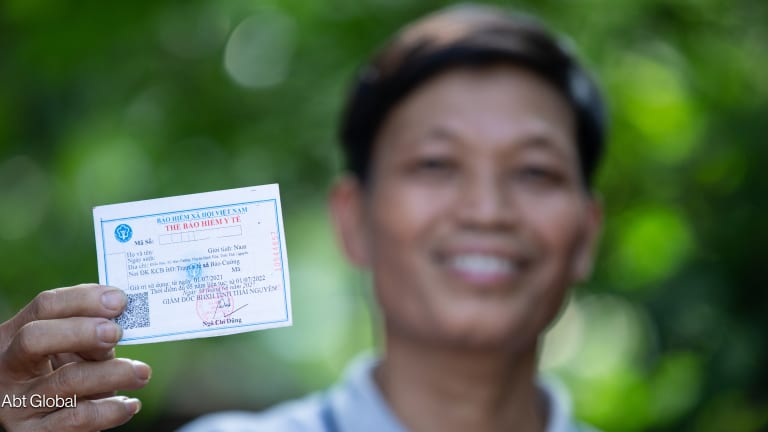
Violence has surged in Sudan as the international community focuses more on the national politics and basic needs of its young southern neighbor. While discussions over oil taxes and government talks take center stage, bombing and displacement continues in South Kordofan and Blue Nile states, with more than 10,000 displaced since mid-May. In Darfur, 1.7 million internally displaced people live in camps, and a current U.N. request of over a billion dollars is less than halfway funded.
The chronic need for humanitarian assistance funding puts organizations asking for that money in a tough situation. Year after year, they must yank donor attention back to an ongoing situation that appears intractable. Sustainable development gains seem impossible, yet aid organizations feel compelled to nevertheless show progress.
“Obviously donors want to see that the money they’re spending is resulting in something,” said Art Kirby, Catholic Relief Services’ regional representative for East Africa.
Organizations have to do a better job of explaining and demonstrating the need, but also showing impact, Kirby said.
Though development seems untenable in a place like Darfur, Catholic Relief Services has found a gray area between responding to emergencies and creating the sustainable change that donors — and communities — want to realize. By training local organizations to provide humanitarian relief, they not only meet an urgent need, but do so in a way that builds longer-term capacity as well.
This creative programming was born in part by necessity: In the past, government regulations and insecurity have hindered food aid distribution, while flooded roads have rendered maintenance visits to water and sanitation projects impossible. Training local organizations or committees to responsibly give food or chlorinate water and maintain pumps at an IDP camp ensure that no matter what, the most urgent work gets done.
It’s also a product of the need to show demanding donors that there can be progress even during an emergency. With fiscal pressures turning the screws on international generosity and other crises perpetually popping up, organizations in Darfur must make the case that just because urgent needs remain doesn’t mean money wasn’t well spent.
Most of CRS’ West Darfur programs are a combination of humanitarian response and “early recovery,” according to Kirby. Food for education programs initiated eight years ago when violence was predominant are transitioning into training programs for teachers, parents and even school cooks who learn to prepare nutritious and hygienic meals.
Much more than just a few years ago, this means involving local Sudanese organizations to a greater extent, Kirby said. By defining common goals across sectors, longer-term needs can be addressed while local groups build up skills and expertise.
And humanitarian action is one sector where local organizations in Darfur can get lots of practice.
An umbrella fund called the Darfur Rapid Emergency Response Fund, managed by CRS and funded through the U.S. Agency for International Development’s Office of Foreign Disaster Assistance, allows both international and local organizations to apply for financing to meet humanitarian needs.
In previous emergencies, organizations that wanted to respond didn’t have the funding in place to buy nonfood items or construct shelters, Kirby said. Access to the $3.5 million DRERF, which was set up in the spring of 2011, makes the response more nimble and efficient, and helps organizations coordinate with each other.
Local organizations are able to submit proposals and do the work, building experience and expertise in emergency response in a way that will fortify their skills for longer-term development work, Kirby said.
The fund meets a dual objective, using emergency response to build capacity in what Kirby referred to as the “Sudanization” of humanitarian aid. Although OFDA’s funds are specifically for emergency relief, the setup has an implicit measure of sustainability since local nongovernmental organizations implementing the projects are grounded in the community and will remain there once international organizations leave.
In the best-case scenario, locals will become the principal actors in each sector, Kirby said.
Although the primary objective remains a quick and effective response, “Donors want to fund something different that has a greater sense of sustainability,” he said.
The fact remains that local groups are building the skills they’d need to manage a complex emergency — not those they’d need in a peaceful, stable Sudan.
Such a Sudan is the dream, and the Doha Document for Peace in Darfur signed last July is the latest attempt to achieve it. But escalating violence and displacement in some Darfur states indicate that emergencies are not a thing of the past for Sudan: In fact, the country was recently ranked one of the most dangerous places for humanitarian workers.
Read more development aid news online, and subscribe to The Development Newswire to receive top international development headlines from the world’s leading donors, news sources and opinion leaders — emailed to you FREE every business day.








